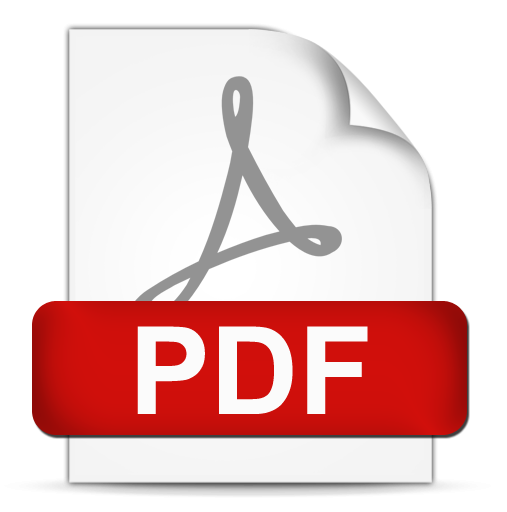PENGARUH EWOM TERHADAP SERVICE QUALITY DAN SATISFACTION PENGGUNA JARINGAN TELEKOMUNIKASI DI INDONESIA
 Abstract Views:
114 times
Abstract Views:
114 times
 PDF Downloads:
37 times
PDF Downloads:
37 times
Abstract
Abstract—This research aims to analyze the influence of the Ewom (Electronic Word of Mouth Communication) dimension on Customer Satisfaction and Service Quality with the moderating effect of Positive Emotional Experience. This research has eight dimensions of constructive variables: Service Communication, Quality Service, Relational Value, Trust, Satisfaction, Ewom, Fwom and Positive Emotional Experience. This study was conducted in a single service setting, and as such, the results cannot be generalized. The data collected to support the initial variables was distributed to telecommunications network 286 users in Indonesia via a Google Forms questionnaire form. This investigation uses SmartPLS 4 because of its robustness in testing prediction models. This document provides guidance on how telecommunications service managers can develop and manage their network of relationships. Specifically, this paper shows how business referrals can be generated and used to build customer retention from a variety of relationship building strategies. This study shows that service providers who provide quality services, design superior values and provide reliable information are in a better position to develop good relationships with customers and ultimately engage them in Positive Emotional Experiences.
Keywords: eWOM, service quality, satisfaction
Abstrak—Penilitian ini bertujuan untuk menganalisis pengaruh dimensi eWOM (Komunikasi Mulut Ke Mulut Elektronik) terhadap Customer Satisfaction dan Service Quality dengan efek moderasi Positive Emotional Experience. Penelitian ini memiliki delapan dimensi dari variabel konstruktif Service Communication, Quality Service, Relational Value, Trust, Satisfaction, eWOM, fWOM dan Positive Emotional Experience. Studi ini dilakukan dalam satu pengaturan layanan, dan dengan demikian, hasilnya tidak dapat digeneralisasi. Data yang dikumpulkan untuk mendukung variabel awal didistribusikan kepada pengguna jaringan telekomunikasi di Indonesia melalui 286 responden kuesioner Google Forms. Penyelidikan ini menggunakan SmartPLS 4 karena ketahanan dalam menguji model prediksi. Dokumen ini memberikan panduan tentang bagaimana manajer layanan telekomunikasi dapat mengembangkan dan mengelola jaringan hubungan mereka. Secara khusus, makalah ini menunjukkan bagaimana referensi bisnis dapat dihasilkan dan digunakan untuk membangun retensi pelanggan dari berbagai strategi membangun hubungan. Studi ini menunjukkan bahwa penyedia layanan yang menyediakan layanan berkualitas, merancang nilai-nilai superior dan memberikan informasi yang dapat diandalkan berada dalam posisi yang lebih baik untuk mengembangkan hubungan yang baik dengan pelanggan dan pada akhirnya melibatkan mereka dalam Pengalaman Emosional Positif.
Kata kunci: eWOM, service quality, satisfaction
Downloads
References
Agung, A. F. (2018). Analisis Pengaruh Harga dan Kualitas Pelayanan Terhadap Kepuasan Konsumen Dalam Perspektif Ekonomi Islam (Studi Komparatif Pada.Konsumen Indomaret dan Swalayan Surya Jalur 2 Korpri) (Doctoral dissertation, UIN Raden Intan Lampung).
Ahdiat, Adi. (2023). Operator Seluler yang Digunakan Responden (Januari 2023). diakses melalui https://databoks.katadata.co.id/datapublish/2023/06/23/ini- operator- seluler- dengan-pengguna-terbanyak-di-indonesia-awal-2023
Buulolo, N. A. (2022). Analisis Strategi Pemasaran 3 Top Brand Provider Telekomunikasi Indonesia (Studi Kasus di Kota Bogor) (Doctoral dissertation, Fakultas Ekonomi dan Bisnis 2Universitas Pakuan).
Fitriyah, I., & Nugroho, R. M. (2021). CENTRALIZATION OF FAMILY e-ARCHIVES THROUGH MEMORY PROCESS ANALOGY. Jurnal Kearsipan, 16(1), 1-18.
Gabbianelli, L. and Pencarelli, T. (2023), "On-campus accommodation service quality: the mediating role of students' satisfaction on word of mouth", The TQM Journal, Vol. 35 No. 5, pp. 1224- 1255. https://doi.org/10.1108/TQM-03-2022-0092
Hallencreutz, J., & Parmler, J. (2021). Important drivers for customer satisfaction–from product focus to image and service quality. Total quality management & business excellence, 32(5- 6), 501-510.
Infografik. (2024). Kinerja Telkomsel, Indosat dan XL Axiata: Balapan Gaet Pelanggan dan Cetak Cuan Kinerja Telkomsel, Indosat dan XL Axiata: Balapan Gaet Pelanggan dan Cetak CuanKinerja Telkomsel, Indosat dan XL Axiata.
Mtande, T. K., Nair, G., & Rennie, S. (2022). Ethics and regulatory complexities posed by a pragmatic clinical trial: a case study from Lilongwe, Malawi. Malawi Medical Journal, 34(3), 213-219.
Muslikhah, R. S., Astuti, Y., & Mahyuddin, M. (2015). Pengaruh Kepuasan Konsumen dan Kepercayaan Merek pada Niat Berkunjung Kembali Hotel di Yogyakarta. Jurnal Manajemen, 5(1), 68–78. https://jurnalfe.ustjogja.ac.id/index.php/manajemen/article/view/185
Oraedu, C., Izogo, E. E., Nnabuko, J., & Ogba, I. E. (2021). Understanding electronic and face-to- face word-of-mouth influencers: an emerging market perspective. Management Research Review, 44(1), 112-132.
Puspita, N. [@NikiPuspita6]. (2023, Maret 12). Telkomsel [X]. https://x.com/nikipuspita6/status/1634857389848666112?s=46
Serra-Cantallops, A., Ramón Cardona, J. and Salvi, F. (2020), "Antecedents of positive eWOM in hotels. Exploring the relative role of satisfaction, quality and positive emotional experiences", International Journal of Contemporary Hospitality Management, Vol. 32 No. 11, pp. 3457-3477. https://doi.org/10.1108/IJCHM-02-2020-0113
Sugiyono. (2016). Metode Penelitian Kuantitatif, Kualitatif dan R&D. Bandung: PT Alfabet.
Sugiyono. (2012). Metode Penelitian Kuantitatif, Kualitatif, R&D. Bandung: Alfabeta.
Wulanningrum, H. (2021). Evaluasi Diseminasi Informasi Vaksinasi Covid-19 Melalui Media Sosial Kementerian Komunikasi dan Informatika. Dinamika dan Strategi Humas Pemerintah di Indonesia Pranata Humas Indonesia, 72.
Wijaya, H. D. (2024). Pengaruh Customer Relationship Management (CRM) terhadap Kepuasan Pelanggan dan Kinerja Perusahaan. EKOMA: Jurnal Ekonomi, Manajemen, Akuntansi, 3(3), 1279-1289.

This work is licensed under a Creative Commons Attribution-ShareAlike 4.0 International License.
- Articles published in CALYPTRA are licensed under a Creative Commons Attribution-ShareAlike 4.0 International license. You are free to copy, transform, or redistribute articles for any lawful purpose in any medium, provided you give appropriate credit to the original author(s) and the journal, link to the license, indicate if changes were made, and redistribute any derivative work under the same license.
- Copyright on articles is retained by the respective author(s), without restrictions. A non-exclusive license is granted to CALYPTRA to publish the article and identify itself as its original publisher, along with the commercial right to include the article in a hardcopy issue for sale to libraries and individuals.
- By publishing in CALYPTRA, authors grant any third party the right to use their article to the extent provided by the Creative Commons Attribution-ShareAlike 4.0 International license.


